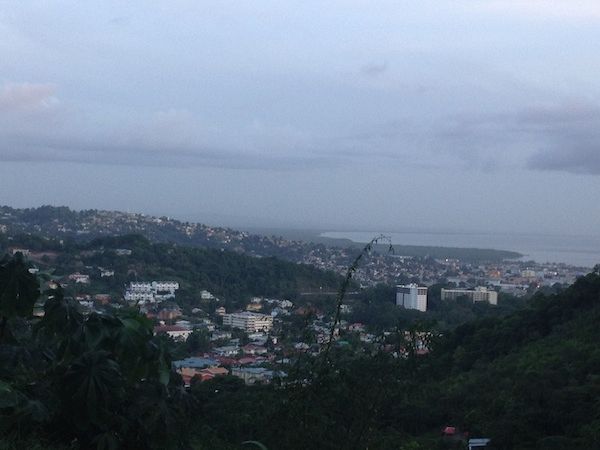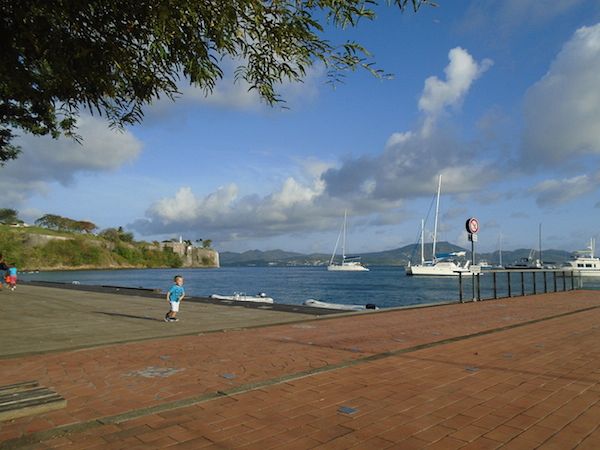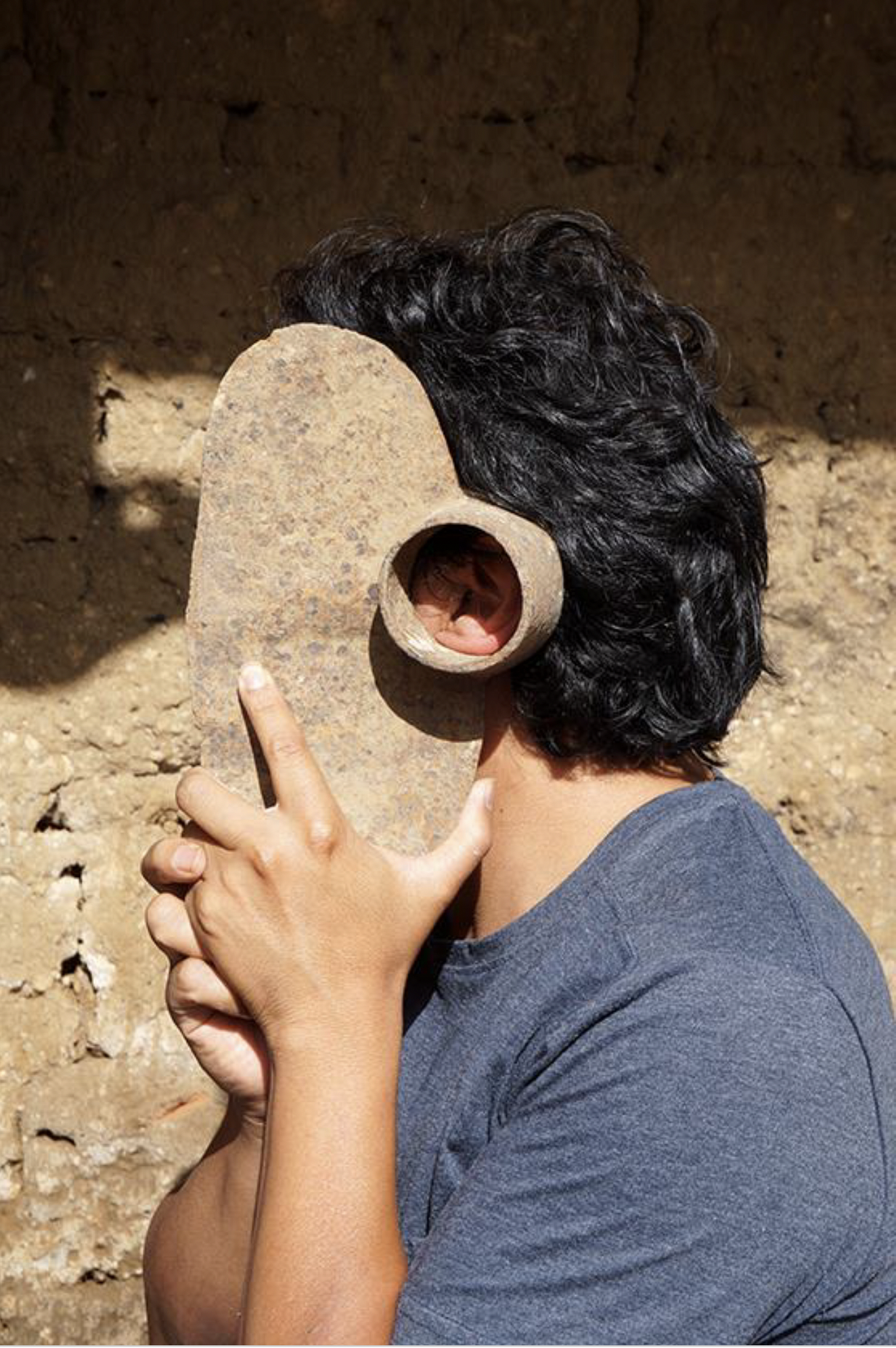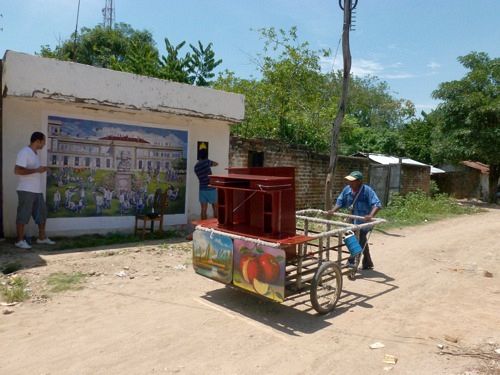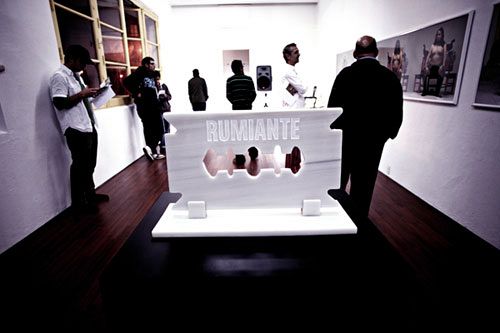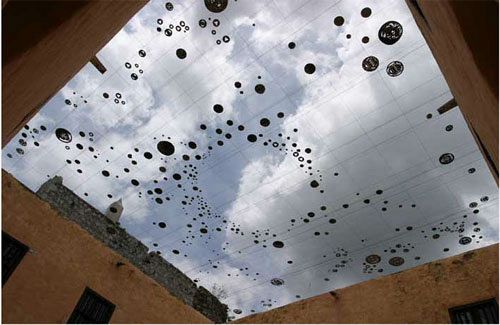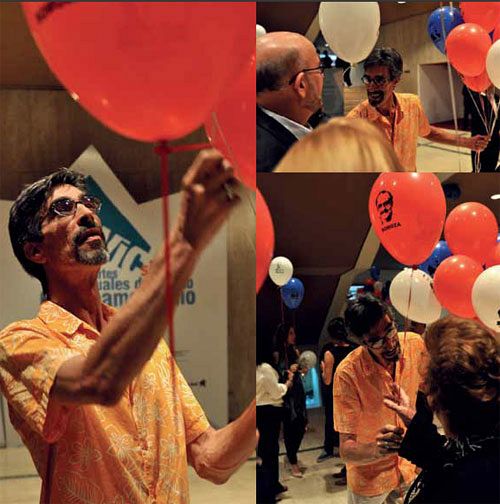This is the fourth and final journal entry for a series of research trips by María Elena Ortiz, the 2014 recipient of the CPPC Travel Award. She will visit new and established contemporary art centers, artist initiatives, and film festivals in the Caribbean countries of Aruba, the Bahamas, Martinique, and Trinidad and Tobago. Her research will explore film and video practices, through interviews with local cultural producers and artists, with the aim of strengthening the ties between art in the Caribbean and the Diaspora in the local community of Miami.
In the Bahamas an artist mentioned to me, “I enjoy not feeling the burden of cultural history.” I found this creative attitude in many places in Nassau, as I came across a locality always in action, generating compelling art that questions the cultural pillars that formed this young nation, while also tracing their history in provocative exhibitions. During my stay, I visited the National Gallery of the Bahamas, the city's well-established artist-run spaces, and met with a group of artists actively shaping contemporary art in Nassau.

Left: Installation view Antillean: an Ecology at The National Gallery of the Bahamas, curated by Holly Bynoe and Michael Edwards. Right: Artists’ talk Idio-scapes, with Arnold Kemp, Kareem Mortimer, Ian Bethell Bennett. Moderated by curator Michael Edwards.
When I arrived, I went directly to the National Gallery of The Bahamas, an elegant museum, where I encountered the seventh national exhibition of The National Gallery of the Bahamas. With a biennial model, Antillean: an Ecology was curated by Holly Bynoe and Michael Edwards. Through an investigation of Martinican writer Edouard Glissant and other Caribbean thinkers, this exhibition examines ideas of race and class in the Bahamas, showcasing the works of local artists, as well as others of Bahamian descent living in diaspora. Challenging a traditional conception of nationhood, this was the first time that this exhibition included artists who were not born in the Bahamas, but have been living there for a significant amount of time. Antillean shows different types of works, such as paintings, videos, installations, performances, and photos, presenting an overview on Bahamian artistic production. Arnold Joseph Kemp’s Untitled (2014) confronts the viewer with the artist’s collection of books about Black Art, African History, and Caribbean thought. Viewers can browse and use this collection, allowing for an inclusive approach towards the understanding of black experience in contemporary culture. Kareem Mortimer’s video work The Naked Truth (2014) also addresses ideas about the construction of race pertaining to the Bahamian context. This work shows a series of individuals being painted black or white. While the viewer sees a black woman being painted white, she/he hears a conversation of a white woman talking about her experiences being a white Bahamian. Then, Mortimer inverts the image to show the same white woman being painted black, while the black woman talks about her experiences regarding race. Using the charged trope of painting bodies, Mortimer creates a poignant visual contrast that speaks to ideas of representation and identity, illuminating the ecology of the cultural consciousness in this country.

Left: Arnold Joseph Kemp, Untitled, 2014. Archival pigment print, 8 x 10 inches. From the series “Possible Bibliography.” Right: Kareem Mortimer, The Naked Truth (still), 2014. HD video with sound. Courtesy of the artist.
As part of Antillean, Edwards and Bynoe developed an educational program, a series of panels throughout the six-month course of the exhibition. I attended three panels where topics of blackness, white privilege, local Haitian discrimination, as well as the Bahamian aesthetic were discussed with artists, educators, and other members of the community. One topic constantly revisited in these sessions was the status of Haitians in the Bahamas, being a minority group aggressively discriminated against in the country.

Left: Installation view of work by Tessa Whitehead and Heino Schmid at Liquid Courage. Courtesy of Holly Bynoe. Right: John Beadle's Studio.
I had studio visits with various artists, some of whom participated in the exhibition at the National Gallery. I met with Tessa Whitehead and Heino Schmid, who have been working collaboratively, and creating a series of works focused on sculpture and time-based experimentation, in which the artists use found materials to make improvised sculptural works. Also, I spoke with Holly Parotti, an artist working in video and photography to address notions of identity, landscape, sexuality, and gender. I had the opportunity to visit with John Beadle, one of the most important artists working in the Bahamas. Beadle is known for using found materials to create formal arrangements that question tradition and representation. Before the end of my trip, I conversed with Jeffrey Meris. Born in Haiti and raised in the Bahamas, Meris is known for his mixed media installations that question his condition as a Haitian-Bahamian. Meris also took me to a Junkanoo shack, a place in which Junkanoo participants create their costumes for the parade-celebration. Near the Junkanoo shack, I visited a community art project, Violets are Blue. Developed by Uli Voges and Valentino “Scrooge” Brown, Violets are Blue is a project dedicated to preserve the cultural history of an inner city neighborhood in Nassau, where Marcus Garvey and Dr. Martin Luther King Jr. both stayed in during their travels to the Bahamas. Violets are Blue demonstrates the history of the civil rights movement in the Caribbean, and how these American social movements resonated internationally.

Houses in an inner city neighbor in Nassau where Marcus Garvey and Dr. Martin Luther King Jr. stayed, respectively. These are being preserved as part of the art community project Violets are Blue by Uli Voges and Valentino “Scrooge” Brown.
In Nassau, there is a history of successful artist-run initiatives generating artistic and curatorial practices. Liquid Courage is a space dedicated to exhibiting artists from the Caribbean and other parts of the world. Coordinated in part by artist Tessa Whitehead, Liquid Courage has been an instrumental space for facilitating local artistic residencies. I also visited the distinguished Popopstudios Center for the Visual Arts, which has been providing studios for artists for 15 years. Initiated by artist and curator John Cox, this space has been instrumental at developing and promoting Bahamian contemporary art practices. It has a gallery and art studios, as well as spaces for international residents to work in the Bahamas for a temporary period. Currently, John Cox has been working to develop an ambitious new institution, Current, which will have a gallery and residency program scheduled to open in 2015. This new institution aims to promote a historical understanding of Bahamian art production. Also, it will have a comprehensive collection and exhibition program, and finance the development of public art projects.

Costume preparations at a Junkanoo shack in Nassau.
On my last day in Nassau, I participated in Blank Canvas, a radio program hosted by Amanda Coulson in Guardian Talk Radio. Along with artists Jeffrey Meris and Jodi Minnis, we discussed their art projects in Antillean: an Ecology, as well as my curatorial practice and current Caribbean research. Close to the end, Amanda asked me about my overall impression of the art community in the Bahamas. I replied with a smile and expressed my contentment in participating in such thought-provoking discussions and panels, visiting a working Junkanoo shack and a beautiful museum, while also getting to know a stimulating group of local artists.

Left: Construction site of upcoming art institution, Current, December 2014. Right: Jeffrey Meris, María Elena Ortiz, Amanda Coulson, and Jodi Minnis at radio show, Blank Canvas.
The research for this project was made possible by the generous support of ICI and Colección Patricia Phelps de Cisneros (CPPC) through the CPPC Travel Award for Central America and the Caribbean.

